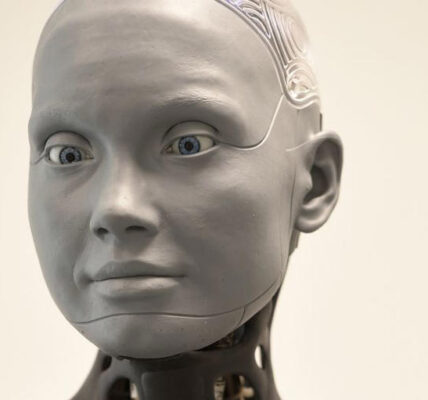Third State Beyond Life and Death: Scientists confirm the existence of a ‘third state’ where cells can adapt and form new life-like functions, challenging traditional definitions of life and death.

Third State Beyond Life and Death: A New Frontier in Science
For centuries, life and death have been understood as two distinct states. Life, where organisms function as a whole, and death, where this ability ceases irreversibly. However, recent scientific research is challenging this binary understanding by discovering a third state beyond life and death. This discovery opens new possibilities in how we view cellular behavior, potentially transforming medicine and biology.
What Is the ‘Third State Beyond Life and Death’?
Scientists, led by researchers Peter A. Noble and Alexander Pozhitkov, have explored how certain cells can continue to function even after the organism they belong to has died. Traditionally, death is marked as the point when an organism no longer functions as a whole. But what happens when individual cells, tissues, and organs continue to work? This gap between life and death has led to the discovery of what researchers are now calling the third state beyond life and death.
In this new study, cells from dead organisms, when given the right stimuli, are capable of transforming into multicellular entities with new roles. This groundbreaking finding could revolutionize the way we view life, death, and the process in between.
The Discovery of Xenobots: A Key to Understanding the Third State
One of the most striking examples of this third state beyond life and death is the development of xenobots. In laboratory experiments, researchers extracted skin cells from dead frog embryos and placed them in petri dishes. Remarkably, these cells did not simply decay. Instead, they spontaneously reorganized into entirely new multicellular organisms, now called xenobots.
Xenobots have shown capabilities far beyond their original biological functions. While the cilia (tiny hair-like structures) in living frog embryos typically move mucus, in xenobots, they were repurposed to help the new organisms move and navigate their surroundings. These new structures are not just surviving; they are thriving in a completely different environment, indicating the adaptability of cells even after death.
Self-Replication in the Third State
What makes this third state even more fascinating is that these xenobots were able to replicate themselves. Unlike traditional forms of reproduction, where cells grow and multiply on or within an organism’s body, these new multicellular entities could replicate without growing. They maintained their structure while developing new roles, showing that cells in this third state can evolve in unexpected ways.
Human lung cells have also exhibited similar behavior in the lab. Solitary cells were able to self-assemble into tiny multicellular organisms capable of moving and even repairing neuron cells nearby. This raises important questions about how cells adapt after death and what this means for future medical research.
Plasticity and Transformation of Cells in the Third State
The third state beyond life and death challenges the traditional view that cells and organisms can only evolve in predetermined ways. While we are familiar with transformations like caterpillars turning into butterflies or tadpoles evolving into frogs, these changes follow a fixed path. In the case of the third state, the cells transform in entirely novel ways, beyond the original roles they were assigned.
Noble and Pozhitkov argue that this cellular plasticity, or ability to change, is a key feature of the third state. It suggests that death may not be the end of cellular activity, but a phase where cells have the potential to reorganize and take on new functions. This discovery could redefine our understanding of life itself.
What Determines Which Cells Survive in the Third State?
Not all cells and tissues can survive and function after an organism dies. So, what determines which cells continue to operate in this third state beyond life and death? According to the researchers, several factors come into play, including environmental conditions, metabolic activity, and preservation techniques.
Different types of cells have varying survival times. For example, in humans, white blood cells can survive for 60 to 86 hours after death, while skeletal muscle cells in mice can regrow up to 14 days postmortem. Preservation techniques, like cryopreservation, can extend the viability of tissues and cells, keeping them functional for future use.
Metabolic activity also plays a significant role. Cells that require less energy to function tend to survive longer, while those that need a continuous supply of energy are more likely to die quickly. The researchers also point out that external factors, such as trauma or infection, can affect whether cells enter the third state.
Cellular Communication in the Third State
One theory to explain how cells survive and function in the third state is based on cellular communication. Cells are equipped with specialized channels and pumps on their membranes that generate electrical signals, allowing them to communicate and perform specific tasks like movement or growth. These signals might help the cells organize themselves into new structures, allowing them to function in this third state.
However, the exact mechanisms behind this transformation are still unclear. The extent to which different types of cells can undergo such changes remains a subject of ongoing research.
Implications of the Third State for Science and Medicine
The discovery of this third state beyond life and death has profound implications for science and medicine. The ability of cells to adapt and transform after death could lead to new treatments and technologies. For example, researchers suggest that anthrobots (multicellular organisms derived from living tissue) could be used to deliver drugs without triggering immune responses. Since these organisms have a finite life span, they naturally degrade after a few weeks, preventing them from becoming invasive.
More importantly, understanding how cells continue to function and metamorphose after death could pave the way for advancements in personalized and preventive medicine. By harnessing the potential of cells in the third state, scientists may develop therapies that promote cell repair and regeneration, offering new hope for treating degenerative diseases and traumatic injuries.
Conclusion: A New Understanding of Life and Death
The concept of a third state beyond life and death challenges our long-held beliefs about life’s boundaries. This newly discovered cellular adaptability opens up a world of possibilities for medical science and our understanding of biology. As research continues, the third state may reveal even more about how life, death, and transformation are deeply interconnected processes.
Related:




